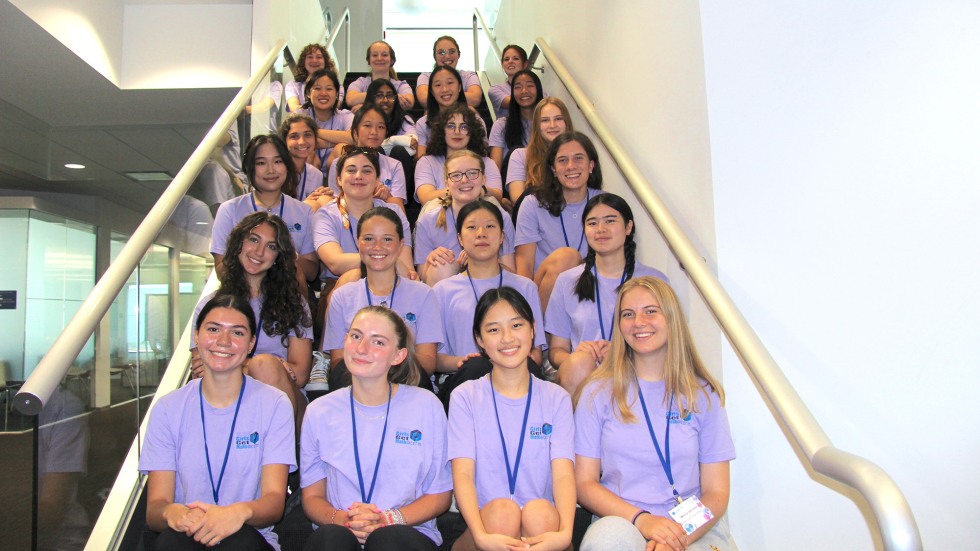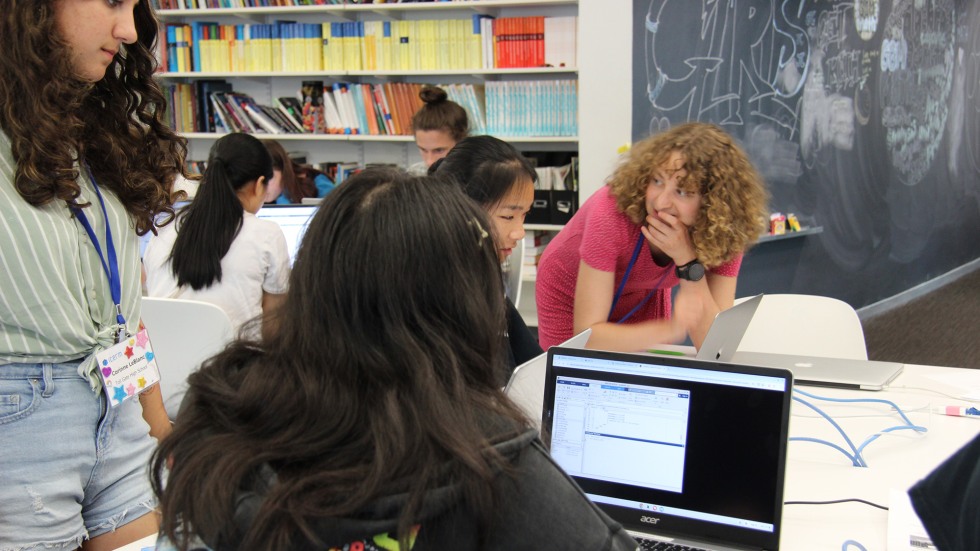PROVIDENCE, R.I. [Brown University] — No cabins, canoes or campfires, for a week at least — this summer, a group of Rhode Island high schoolers swapped s'mores and singalongs for STEM topics at GirlsGetMath@ICERM, a five-day math camp at Brown University.
Hosted by Brown’s Institute for Computational and Experimental Research in Mathematics, the annual camp is designed to cultivate interest, inspire confidence and instill a sense of belonging for young students exploring math and science fields. It introduces concepts not often included in traditional high school curricula through activities, games, lectures and computer labs.
This year's program welcomed 23 rising 10th and 11th graders from across Rhode Island, who engaged in a range of interactive activities, hands-on labs and thought-provoking discussions where students could explore the beauty and utility of mathematics. Each morning, for instance, the Girls Get Math students tackled a question of the day, with topics ranging from whimsical musings like “What color is math?” to technical queries such as “What’s your favorite trig function?” The questions served as icebreakers, sparking discussions that made mathematics approachable and engaging, students said.
"The best part was meeting girls my age who love the same things I do and love math,” said Briella Weimer, a junior at Barrington High School.
One highlight was a visit to the Harris Lab at Brown's School of Engineering, where students were introduced to fluid dynamics, impact dynamics, materials science and structural optimization. Under the guidance of Brown graduate students, participants explored the principles of fluid viscosity by injecting bubbles into different materials, a hands-on experiment that tied physics concepts like friction and gravity to real-world applications.


